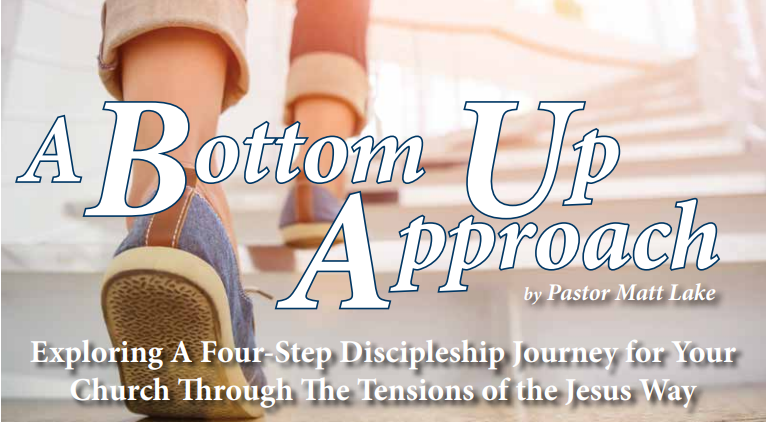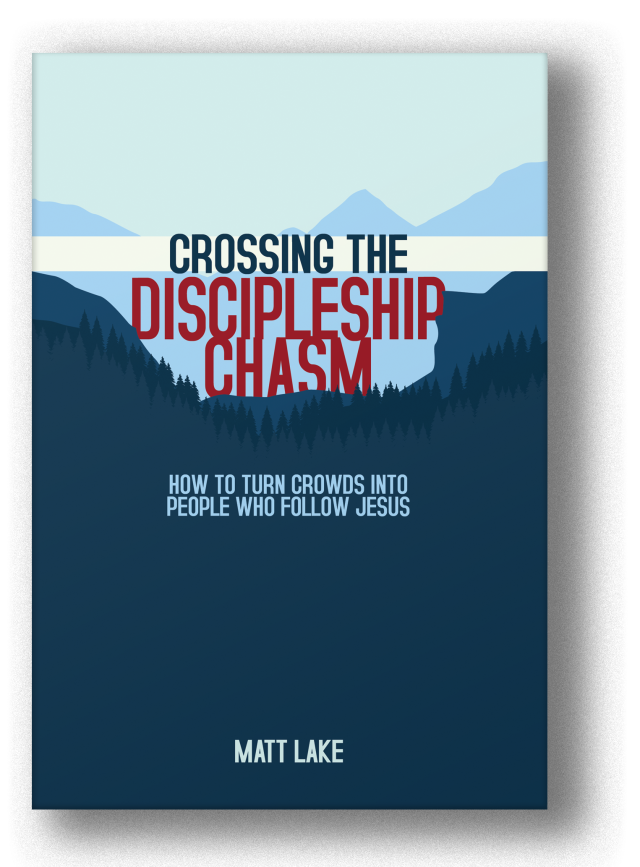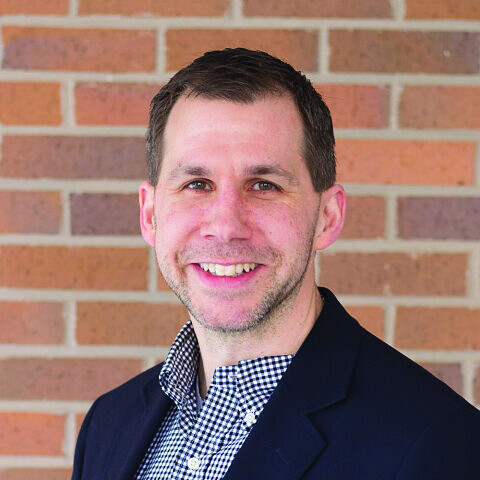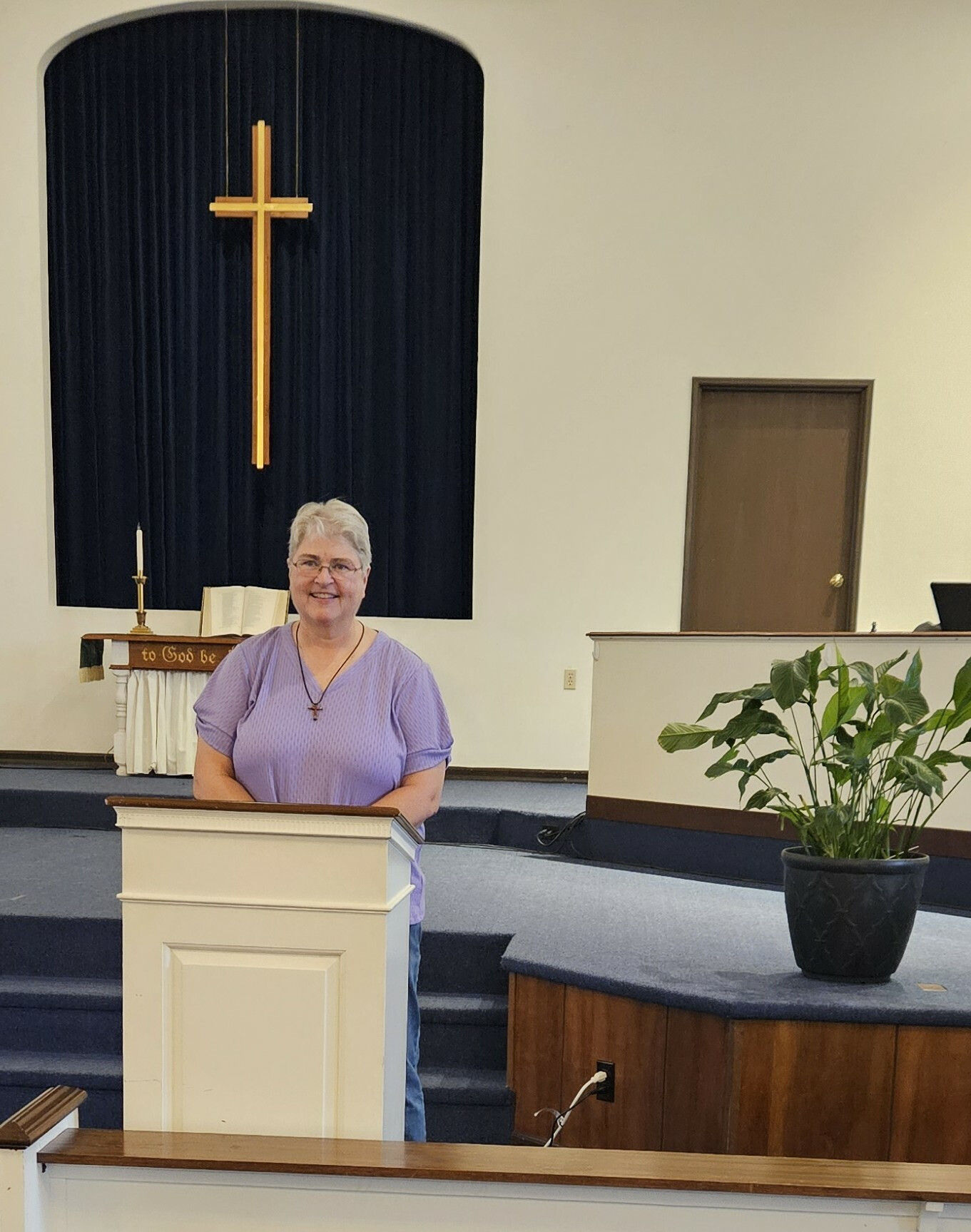
In Crossing the Discipleship Chasm, Pastor Matt Lake clearly diagnoses the wide chasm between Jesus’s command to make disciples and our many ineffective ways of putting that command into action. Thankfully, Pastor Matt also prescribes a practical guide to crossing that perilous chasm. As Lead Pastor of First Church Williamsport, Matt is experiencing firsthand the challenges and joys of crossing today’s discipleship chasm. Matt is not only a compelling author and practitioner, but the keynote speaker for our Triennial Conference on July 15th – July 17th.
The following are selected excerpts from Crossing the Discipleship Chasm. You can find physical and digital versions of the book at major book retailers like Barnes & Noble, on Amazon, and on the publisher’s website: inviteministries.org 
Discipleship is lived out of the deep love we have with Christ Himself. It is deeply personal. It is intimate. At the same time, it is formative. And generative. It impacts individuals. It impacts communities of believers. And therefore it impacts the world. Healthy churches simply cannot exist, much less thrive, without a healthy culture of discipleship.
I have always loved how author Neil Cole proclaims this reality in such a blunt manner when he shares: “Ultimately each church will be evaluated by only one thing. It’s disciples. Your church is only as good as its disciples. It does not matter how good your praise, preaching, programs, or property are. If your disciples are passive, needy, consumerist, and not moving in the direction of radical obedience, your church is not good.”1
Those are some strong words! But they carry truth.
Thus, because Jesus mandates discipleship, and because discipleship is essential to the individual and corporate health of Jesus followers, we discover a most compelling “why” to discipleship.
Local churches that get the issue of discipleship right—or even partly right—are going to experience higher levels of vitality than those that do not focus on discipleship in healthy ways. The higher the level of commitment to and intentionality about healthy discipleship—through the tension of presenting formal content and experiential practices—the higher the level of local church health that occurs.
It is that simple. Thus the starting point toward healthy discipleship for any church is to commit with intentionality toward discipleship. To be clear, commitment to discipleship means more than a few individuals taking their discipleship journeys more seriously. Commitment to discipleship means a congregation-wide intentionality and alignment. So if there are not formal means by which the truth and doctrines and history of the church are shared in a local congregation, such means must be developed and instituted. Perhaps this means forming congregational alignment around discipleship, setting up times for learning more about the faith, engaging in spiritual inventories, or more Bible study time.
At the same time, these formal opportunities must be accompanied by more informal means by which the faith is shared and fostered through authentic discipleship practices in a more personal, step-by-step manner—for however long it might take. Perhaps this means fostering more mentoring opportunities, one-on-one conversations, personal invitations, organic exploration of discipleship over time, activation of each person’s unique gifts, a commitment to empowering people in new directions, and fostering individuals’ calls rather than filling corporate volunteer slots.
What might such interventions look like at a practical level?
[The] following is a general overview of what these steps of discipleship intervention have looked like in our local church (First Church Williamsport, PA setting. You do not need to directly replicate this model, although you may. But look for the elements, ideas, and clues that are transferrable to your context.
Disciple’s Journey Step 1
The first two steps of this Disciple’s Journey may outwardly look similar to steps that many churches take (although the orientation in steps 1 and 2 of Disciple’s Journey is different). Our step 1 is focused on connection. People connect with God and our church through the completion of five informational sessions. This step involves a lot of content being shared about the DNA and vision of the church, a connection with some of our staff, opportunities to get involved, and a chance for dialogue where questions can be answered. At the end of this step focused on connection, people can join in the life of the church through formal discipleship if they so wish. We do not make it overly difficult to join in the life of the church. Our goal is to help people to connect and then help them grow deeper in discipleship and faith.
Disciple’s Journey Step 2
The second step of this Disciple’s Journey involves six informational sessions focused on people discovering their gifts and passions through strengths assessments, spiritual gift inventories, and surveys. Many churches also have a step somewhat similar to this. In this case, however, individuals are not raised up with the goal of becoming church volunteers. They are specifically introduced to the concept of exploring discipleship tensions and how those tensions will form their life of discipleship.
Disciple’s Journey Step 3
In step 3, through eight generative sessions (although the number of sessions does fluctuate depending on how many people are participating), a shift occurs from a “content-first” approach to a “practice-first” approach in which individuals put into practice what they have been learning. Practices such as the sharing of one’s faith, prayer, offering testimony, committing to new areas of service and leadership, and navigating discipleship tensions are all employed. This is the stage that many churches do not offer with any intentionality—but it’s a place where we have seen great growth and new life emerge. We have seen, repeatedly, the embracing of discipleship tensions lead to new life through practices previously not employed.
Disciple's Journey Step 4
Finally, in step 4, we invite people into various informal, ongoing relationships. In this step individuals are encouraged to enter into apprenticeship with a mentor in the area of ministry they have felt called to, participate in a resourcing experience, or share in some combination of the two. These individuals are now understood as key leaders and influencers. The focus here is creating a multiplying effect as ultimately new people are introduced into faith through the discipleship of those in this fourth step. Here we seek to ignite and unleash individuals into their formative and generative callings in the most practical of ways.
In similar fashion, the discipleship process being described here is one that occurs on a continual, repeated, annual basis. Knowing that people have busy lives, that the Spirit moves at different times, and that circumstances change, this journey is offered in such a way as to allow people to engage when and as they are most ready. Some people may take steps 1 and 2 almost immediately and then take years to get to step 3. Others may take step 1, then wait a few years until step 2, and never get to step 3. Still others may go through all four steps as quickly as possible. With each rotation of the discipleship journey in a local church setting, the culture shifts a little more to allow for dynamic discipleship to flourish in the church culture as a whole.
 Pastor Matt Lake
Pastor Matt Lake
Did you find this helpful? Get the whole book here: Buy Now





Login To Leave Comment